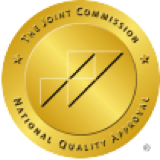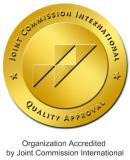Chickenpox is a common acute infectious disease among children. When a child contracts chickenpox, red spots appear all over the body, causing discomfort and intense itching. Due to its high contagiousness, improper handling can lead to complications—ranging from mild skin scarring to more serious conditions such as pneumonia and skin infections. Therefore, parents should carefully plan how to care for children affected by chickenpox.
What Is Chickenpox? What Virus Causes It?
Chickenpox is a common and highly contagious viral disease that primarily affects children, though adults can also become infected. It is caused by the Varicella-Zoster Virus (VZV), which belongs to the herpesvirus family. When a person is first infected with this virus, they develop symptoms of chickenpox. The virus may then remain dormant in the nervous system and can reactivate later in life, especially when the immune system is weakened, leading to shingles (herpes zoster).
Chickenpox Symptoms
In the early stages, chickenpox typically begins with red spots appearing on the chest and back, gradually spreading to the limbs, face, and even inside the mouth. These red spots develop into small blisters, which eventually dry out over the course of approximately 5 to 10 days.
Once a child recovers from chickenpox, they usually gain lifelong immunity. However, the virus can remain dormant in the nerve tissues. If the immune system weakens later in life, the latent virus may reactivate, causing symptoms along the affected nerves—commonly known as shingles.
Chickenpox Incubation Period
The incubation period for chickenpox typically ranges from 10 to 21 days, with most patients developing symptoms around 14 to 16 days after infection. During this time, although no obvious symptoms are present, the varicella-zoster virus (VZV) is already active within the body.
It’s important to note that chickenpox is highly contagious. An infected person becomes infectious 1 to 2 days before the rash appears and remains so until all blisters have completely scabbed over. This means the virus can be transmitted even before any visible signs emerge. In group settings such as households, schools, or daycare centers, the virus can spread rapidly. Therefore, if chickenpox infection is suspected, early isolation is crucial to prevent further transmission.
Transmission Routes of Chickenpox
Chickenpox is caused by the varicella-zoster virus and is a highly contagious disease. It spreads primarily through direct transmission via respiratory droplets, airborne particles, and skin contact. Indirect transmission is also possible—contact with clothing, utensils, or other items contaminated by fluid from chickenpox blisters can lead to infection.
Possible Complications from Contracting Chickenpox
Although chickenpox is usually mild in most healthy children, it can still cause serious complications in certain patients—especially infants, the elderly, pregnant women, and individuals with weakened immune systems.
| Skin Infection | Scratching can lead to bacterial infection of the wounds, resulting in cellulitis or abscess formation. |
| Pneumonia | Particularly common in adult patients, both viral and bacterial pneumonia may occur. |
| Encephalitis | The virus can infect the central nervous system, leading to symptoms such as headache, confusion, and seizures. |
| Reye's Syndrome | May occur in children taking aspirin-containing medications, affecting liver and brain function. |
| Thrombocytopenia | Leads to blood-related issues such as bruising or prolonged bleeding. |
| Shingles (Herpes Zoster) | After recovering from chickenpox, the virus can remain dormant in the nerve ganglia and later reactivate, causing painful shingles. |
Precautions When Contracting Chickenpox
Chickenpox is highly contagious. Patients can spread the virus from 1 to 2 days before the rash appears until all blisters have crusted over. If infected, the following precautions should be taken to promote recovery and prevent complications or transmission to others.
- Avoid Going Out and Contact with Others: Patients should stay home and rest, especially avoiding contact with pregnant women, infants, and individuals with weakened immune systems to prevent transmission.
- Avoid Scratching Blisters: Scratching can lead to bacterial infections and scarring. Keeping fingernails short or wearing gloves can help reduce the risk of skin damage.
- Keep Skin Clean and Dry: A quick daily rinse with lukewarm water is recommended. Avoid harsh cleansers. Maintaining skin hygiene helps prevent secondary infections.
- Wear Loose-Fitting Clothing: This reduces skin friction and prevents irritation of the rash.
- Stay Hydrated and Get Plenty of Rest: This supports faster recovery. If fever occurs, antipyretics may be used (avoid aspirin to prevent the risk of Reye’s syndrome).
- Wear a Mask When Visiting the Doctor: If medical attention is needed, wear a mask and inform the staff about chickenpox symptoms to reduce the risk of spreading the virus in healthcare settings.
Methods for Diagnosing Chickenpox
The diagnosis of chickenpox is primarily based on clinical symptoms. Doctors can usually determine infection by observing the patient's skin lesions and reviewing their medical history.
Clinical Observation
Doctors will examine whether the patient presents with the characteristic chickenpox rash, which includes red spots, blisters, and scabs appearing simultaneously in various stages across different parts of the body—especially on the face, chest, back, and scalp.
Medical History Inquiry
Doctors will ask whether the patient has had contact with someone infected with chickenpox, whether they have received the chickenpox vaccine, and whether they have previously had chickenpox.
Specialized Testing (If Necessary)
- Viral Testing: For patients with atypical symptoms or weakened immune systems, doctors may perform tests on blister fluid or blood to confirm infection with the varicella-zoster virus (VZV).
- Blood Tests: These are used to detect antibodies against the chickenpox virus, helping determine whether the patient has been previously infected or has developed immunity.
Typically, if a healthy individual presents with classic symptoms, doctors can make a diagnosis without additional laboratory tests. However, if the case is complicated or there's suspicion of another skin condition, further testing may be arranged to identify the exact cause.
Chickenpox Care and Treatment Methods
Parents who have experienced chickenpox themselves often know the “tricks” to prevent their children from scratching and leaving scars. These include having children wear gloves, trimming their nails to avoid scratching the affected areas, and giving warm baths to soothe skin discomfort.
From a medical perspective, if a child finds the itching unbearable, doctors may prescribe appropriate anti-itch medications. Nowadays, a chickenpox vaccine is also available, and parents can consult with a pediatrician to determine whether their child should receive it.
Methods for Preventing Chickenpox
The most effective way to prevent chickenpox is through vaccination. Chickenpox is a highly contagious viral disease that spreads primarily through respiratory droplets or direct contact with skin lesions. Outbreaks are especially common in crowded places such as schools and daycare centers.
1. Vaccination
The chickenpox vaccine is the primary measure for preventing infection. It is recommended that children receive one dose at age 1 and a second dose between ages 4 to 6. Teenagers and adults who have never been infected or vaccinated should also receive two doses. The vaccine not only effectively prevents infection but can also significantly reduce the severity of the illness if infection does occur.
2. Avoid Contact with Infected Individuals
Chickenpox patients are contagious from 1 to 2 days before symptoms appear until all blisters have crusted over. It is important to avoid contact with infected individuals, especially for pregnant women, infants, and those with weakened immune systems.
3. Maintain Good Personal Hygiene
Frequent handwashing and avoiding the sharing of towels or utensils can help reduce the risk of virus transmission.
4. Environmental Hygiene Management
Maintain indoor ventilation and cleanliness, especially in places like schools and childcare centers. If a confirmed case occurs, prompt disinfection and reporting are essential to prevent the spread of infection.
FAQ
How long does chickenpox last? How to recover faster from chickenpox?
Generally, the course of chickenpox lasts about 7 to 10 days. The rash goes through stages of spots, blisters, and scabbing before healing naturally. To speed up recovery, it's recommended to keep the skin clean and dry, avoid scratching to prevent infection, and—under a doctor's guidance—use anti-itch creams or oral antiviral medications (such as Acyclovir) to relieve discomfort and shorten the illness duration.
What Is the Relationship Between Chickenpox and Shingles?
Chickenpox and shingles (herpes zoster) are caused by the same virus—the varicella-zoster virus. The initial infection leads to chickenpox, and after recovery, the virus remains dormant in the nervous system. When the immune system weakens, the virus can reactivate and cause shingles. Therefore, individuals who have had chickenpox may still develop shingles later in life.
Who Is Most Susceptible to Chickenpox? Is It More Dangerous for Adults?
Individuals who have not been vaccinated or have not had chickenpox are at risk of infection, particularly children, school-aged children, or those with weakened immunity. Adults who contract chickenpox generally experience more severe symptoms and are more prone to complications such as high fever, skin ulcers, pneumonia, and encephalitis, requiring special attention.
At What Age Should Vaccines Be Administered?
It is recommended that children receive the first dose at 1 year of age and the second dose between 4 to 6 years of age to achieve full protection. Adults who have not been vaccinated or previously infected are also advised to receive two doses for enhanced protection. Consult a doctor to assess health conditions before vaccination.















